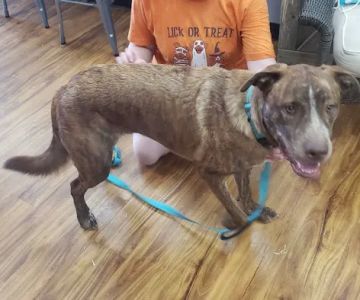- Why Reliable Recall Is Crucial for Your Dog’s Safety
- Detailed Steps to Train Your Dog to Come When Called
- Overcoming Common Challenges in Recall Training
- Real-Life Stories: How Consistent Recall Training Changed Dogs’ Lives
- Expert Tips and Resources for Continued Success
1. Why Reliable Recall Is Crucial for Your Dog’s Safety
Teaching your dog to come when called is one of the most essential commands you can impart. Reliable recall is not just about obedience—it can literally save your dog’s life. Imagine a scenario where your dog slips out of the yard or is off-leash in a park. Without a strong recall, they might chase after distractions or run toward dangerous situations like traffic or aggressive animals.
Recall training enhances your control and communication with your pet, allowing for greater freedom and confidence for both you and your dog. Furthermore, a dog that consistently responds to their name can enjoy more social interactions, off-leash adventures, and less stress during outings.
It’s important to remember that teaching a dog to come when called builds trust and strengthens your bond. Dogs are more likely to respond enthusiastically when they know that coming back to you means positive experiences such as praise, treats, or playtime.
2. Detailed Steps to Train Your Dog to Come When Called
Effective recall training requires patience, consistency, and positive reinforcement. Here’s a comprehensive guide to get started:
2.1 Establish a Positive Association with the Recall Cue
Begin indoors or in a quiet area without distractions. Use a cheerful tone and call your dog’s name followed by a clear recall word like “come.” When your dog approaches, reward immediately with a tasty treat or affection. Repeating this builds a strong connection between the command and a positive reward.
2.2 Practice Short-Distance Recall
Once your dog reliably responds indoors, increase the distance gradually. Call your dog from across the room or yard, always rewarding prompt responses. Keep training sessions short but frequent to avoid frustration for both you and your dog.
2.3 Introduce Controlled Distractions
Dogs naturally get distracted, so it’s critical to simulate real-life conditions. Practice calling your dog in environments with mild distractions, like a backyard with a neighbor walking by. Reward success generously to reinforce the behavior under more challenging circumstances.
2.4 Use a Long Line for Safety and Control
A long leash or training line allows your dog to explore safely while still enabling you to enforce the recall command. This helps build confidence and reinforces the command without risking your dog running off unexpectedly.
2.5 Avoid Negative Associations
Never call your dog to punish or end a fun activity abruptly. If the dog learns that coming when called means something unpleasant, they will be reluctant to respond. Instead, ensure every recall leads to positive outcomes, strengthening their willingness to come to you.
3. Overcoming Common Challenges in Recall Training
Recall training isn’t always straightforward. Many dog owners face hurdles such as selective hearing, distraction, or lack of motivation. Here are some common issues and practical solutions:
3.1 Dog Ignores the Call
This often happens when distractions are stronger than the reward. Increase the value of your treats or toys during training sessions. Use enthusiastic praise and change the environment to lower distractions before gradually increasing them again.
3.2 Dog Runs Away or Avoids You
If your dog runs away when called, avoid chasing them, as this can turn the recall into a game of “catch me if you can.” Instead, try crouching down, opening your arms, and using a happy tone to invite your dog back. Reward immediately upon approach.
3.3 Inconsistent Training
Consistency is key to success. Set aside daily time for recall practice, use the same cues, and involve all family members in training to avoid confusion. Remember, slow progress is still progress.
4. Real-Life Stories: How Consistent Recall Training Changed Dogs’ Lives
Consider the story of Max, a young Labrador Retriever who initially ignored recall calls due to his excitable nature. Max’s owner started training with short sessions using high-value treats and a long line in a quiet park. Within weeks, Max responded reliably even with distractions like squirrels or other dogs nearby.
Max’s recall success allowed him to enjoy off-leash playtime safely, reducing the owner’s anxiety. This improvement also strengthened their relationship, as Max now viewed coming when called as a rewarding and fun activity.
Stories like Max’s illustrate that recall training is achievable for any dog with the right approach and dedication.
5. Expert Tips and Resources for Continued Success
For dog owners looking to deepen their training or address specific behavioral challenges, professional guidance can be invaluable. Veterinary professionals and certified trainers provide tailored advice, techniques, and products that support effective recall training.
At Hidden Brook Veterinary, you can find expert recommendations on the best training tools, nutritional supplements, and behavior support services to assist your dog’s learning journey. Their team is dedicated to helping you create a happy, obedient, and healthy companion.
Remember, patience and positive reinforcement are your best tools. Celebrate every small success and maintain a joyful training environment. Your dog’s willingness to come when called will grow stronger with every step.












